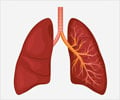Tezacaftor and Ivacaftor Medication Information
Discover comprehensive details about Tezacaftor and Ivacaftor, including its pronunciation, uses, dosage instructions, indications, and guidelines on how and when to take it or avoid it.
The updated prescription information covers potential side effects, precautions, warnings, and storage recommendations.
Additionally, explore the Tezacaftor and Ivacaftor brands available in India and internationally, along with pricing information. For personalized advice, consult your healthcare provider.
Generic Name : Tezacaftor and Ivacaftor Pronunciation : tez-a-KAF-tor & eye-va-KAF-tor Therapeutic Classification : MiscellaneousBrand Names or Trade Names of Tezacaftor and Ivacaftor
India :
Symdeko
Overview of Tezacaftor and Ivacaftor
• FDA approves a fixed-dose combination of tezacaftor and ivacaftor tablets and ivacaftor monotherapy for oral use in February 2018 for treating patients with cystic fibrosis in patients aged from 12 years.Why is Tezacaftor and Ivacaftor Prescribed? (Indications)
Tezacaftor and Ivacaftor tablets in combination therapy and ivacaftor as a monotherapy are prescribed in patients 12 years and older who are suffering from cystic fibrosis (CF). The condition is due to one or two F508del mutations in the cystic fibrosis transmembrane conductance regulator (CFTR) gene.If the patient’s genotype is not known, the patient can be treated by confirming the cystic fibrosis gene mutation by an FDA-cleared CF mutation test followed by verification with bi-directional sequencing.
When should Tezacaftor and Ivacaftor not be taken? (Contraindications)
Tezacaftor and Ivacaftor should not be used if the patients are-• Allergic to tezacaftor and Ivacaftor
• Suffering from severe liver disease
• Pregnant or breastfeeding
• Below 12 years of age
What is the dosage of Tezacaftor and Ivacaftor?
• The recommended dose of the combination drug is 100 mg of tezacaftor and 150 mg of ivacaftor that is taken in the morning, and 150 mg of ivacaftor monotherapy that should be taken in the evening with 12 hours apart between the two doses.How should Tezacaftor and Ivacaftor be taken?
• Tezacaftor and ivacaftor are available as tablets and should be taken by mouth.• Take the tablets with fatty foods such as whole milk, cheese, butter, cheese pizza, yogurt, or eggs for better absorption.
What are the warnings and precautions for Tezacaftor and Ivacaftor?
• Monitor for elevated liver enzymes before starting treatment with tezacaftor and ivacaftor and for every three months during the treatment and yearly once after one year.• Eye examination has to be carried out in children to detect and treat cataracts.
• Do not drive or perform any skilled works which may require mental alertness as tezacaftor and ivacaftor tablets may cause drowsiness.
• Caution is required while treating patients with severe kidney impairment or end-stage renal disease.
• Dosage adjustments are required in patients with moderate to severe liver disease and patients taking medications such as itraconazole and clarithromycin.
What are the side effects of Tezacaftor and Ivacaftor?
• Nausea• Dizziness
• Headache
• Nasal congestion
• Sinus pain
• Upset stomach
• Alteration in liver enzymes level
• Vision disturbances
What are the other precautions for Tezacaftor and Ivacaftor?
• Take the missed dose immediately if the period is not more than 6 hours from your previous dose.• Do not take a double dose to make up for the missed dose.
What are the Drug Interactions of Tezacaftor and Ivacaftor?
• Avoid taking with grapefruit or grapefruit juice• Do not take with Seville oranges
• Never take with herbal medications containing St. John’s Wort
Drugs that alter and should be avoided while taking tezacaftor and ivacaftor are:
• Antifungal drugs (e.g., Itraconazole, voriconazole, posaconazole)
• Macrolide antibiotics (e.g., Clarithromycin, telithromycin)
• Digoxin
• Seizure medications (e.g., Phenobarbitone, carbamazepine, phenytoin)
• Other antibiotics (e.g., Rifampicin, rifabutin, ciprofloxacin)
What are the storage conditions for Tezacaftor and Ivacaftor?
• Store tezacaftor and ivacaftor tablets at room temperature between 20°C and 25°C.• Keep away from excess heat and moisture.
 MEDINDIA
MEDINDIA
 Email
Email







